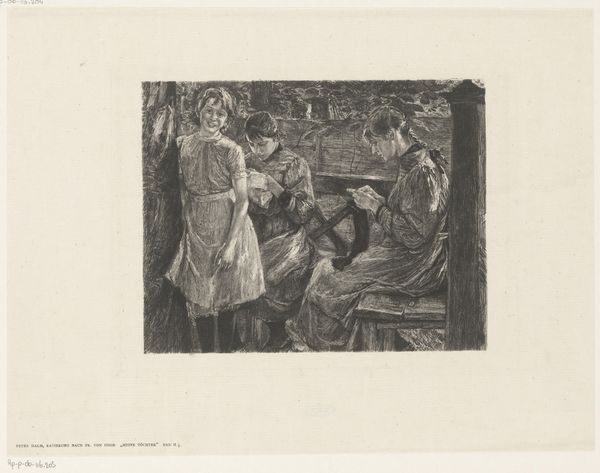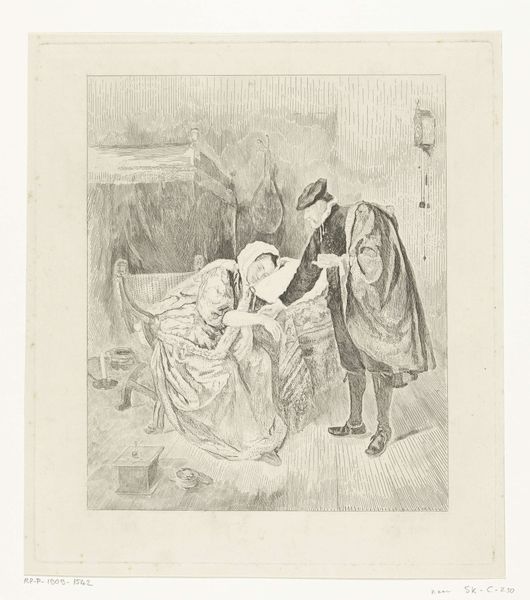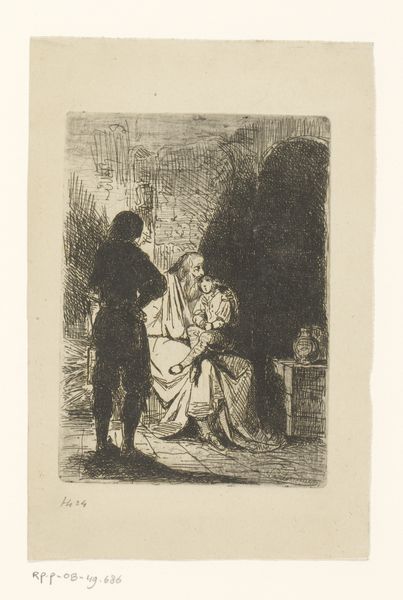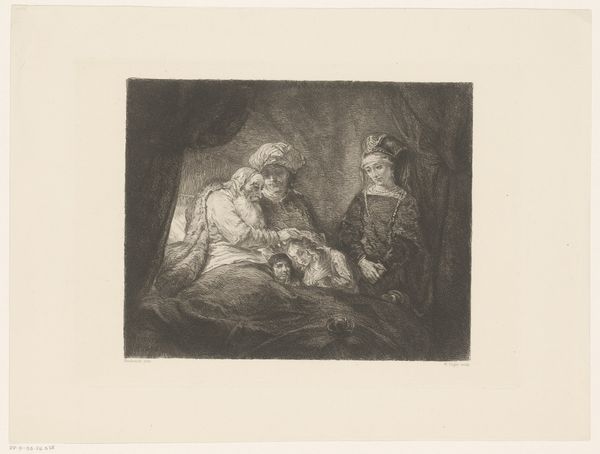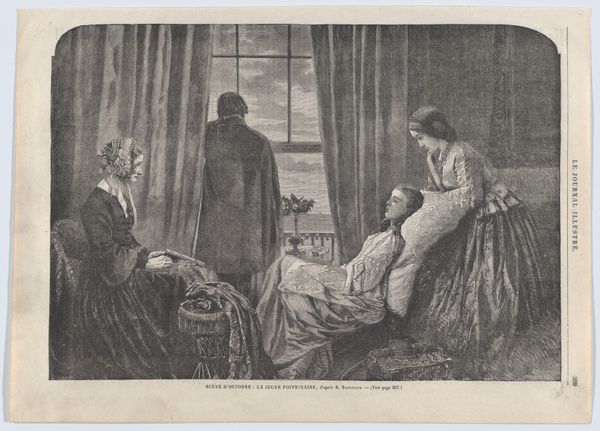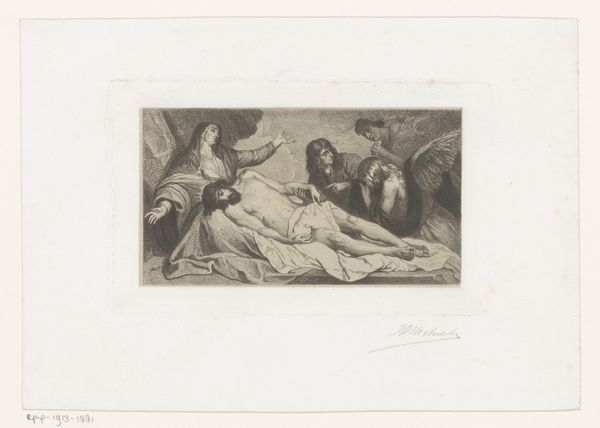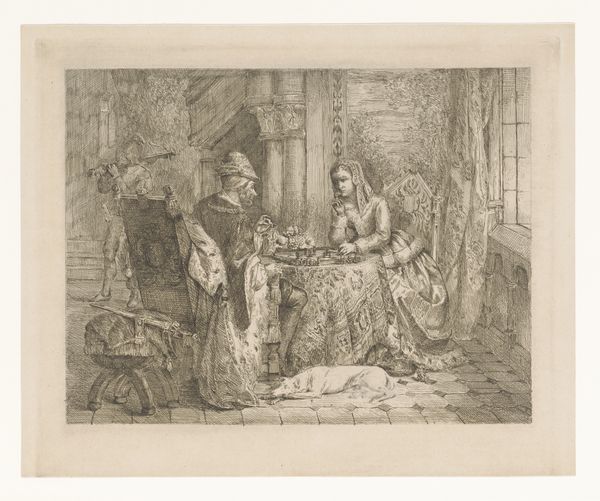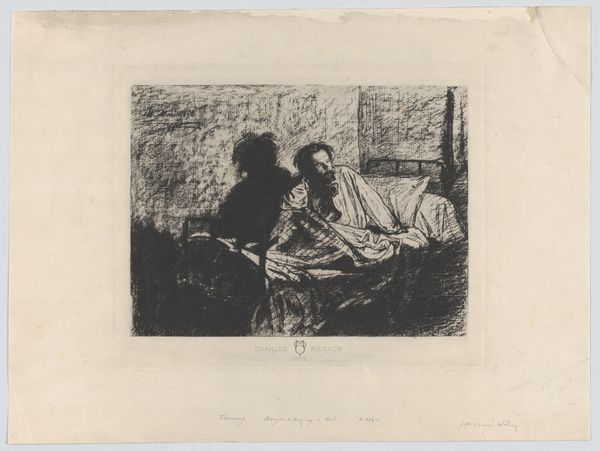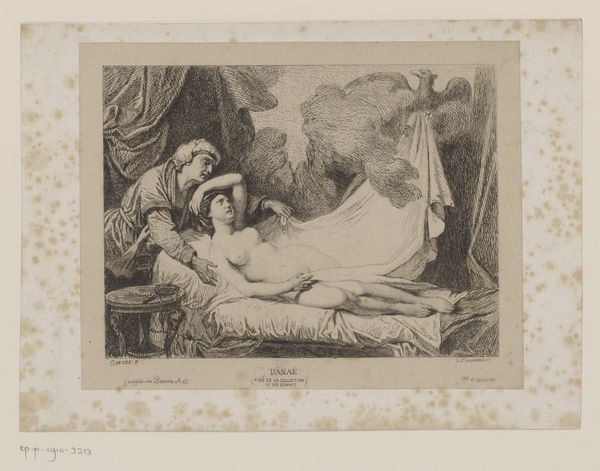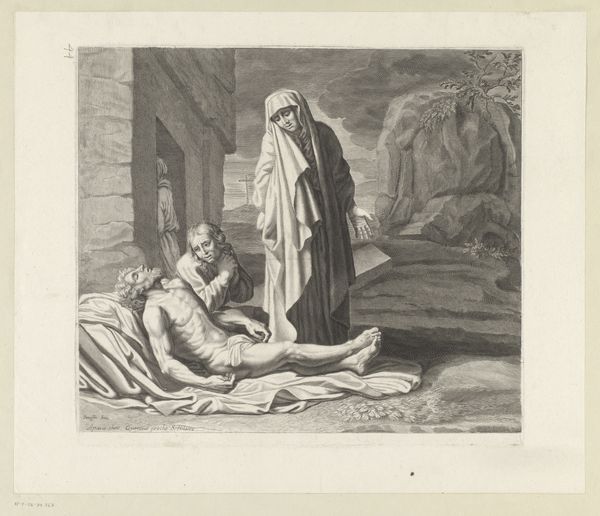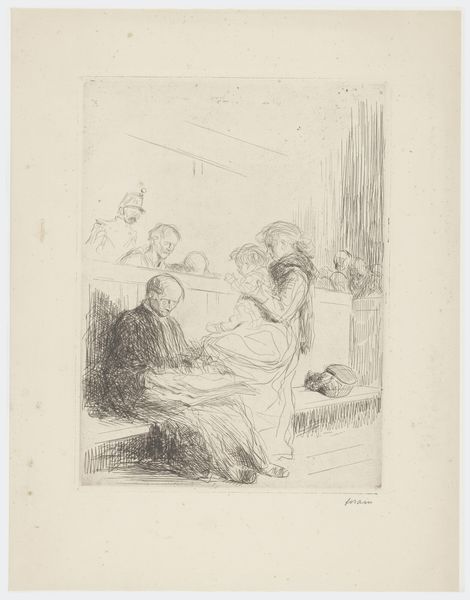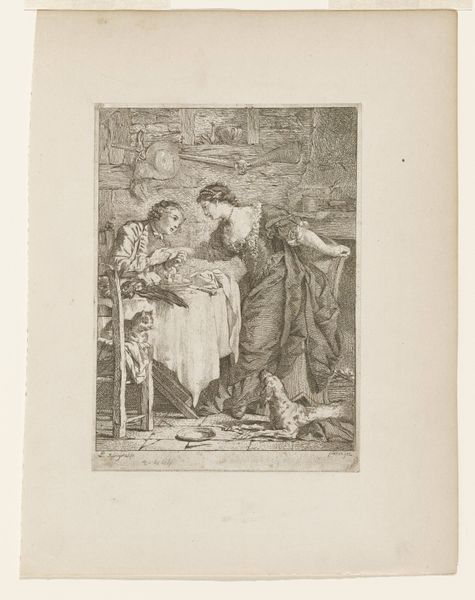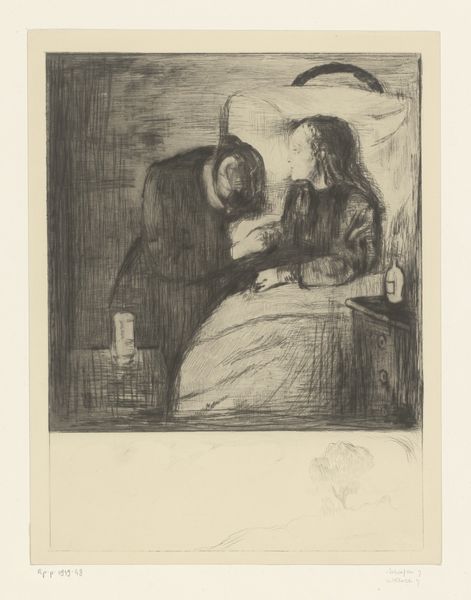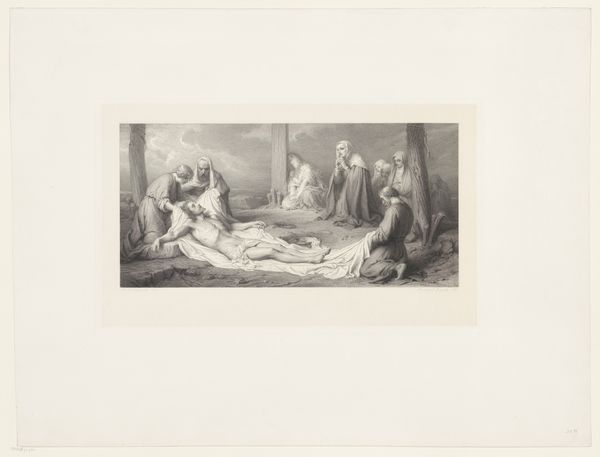
Johan en Cornelis de Witt in hun kamer in de Gevangenpoort, 1672 19th century
0:00
0:00
Dimensions: height 220 mm, width 303 mm
Copyright: Rijks Museum: Open Domain
Curator: This etching from the 19th century by Fr. van Groeningen depicts Johan and Cornelis de Witt in their prison cell in 1672. Editor: The stark black and white, combined with the close quarters, creates an incredibly claustrophobic feeling. You can almost feel the weight of their despair pressing in. Curator: Indeed. This work captures a pivotal moment during the Rampjaar, the disastrous year in Dutch history marked by war and political upheaval. The de Witt brothers, powerful statesmen, were blamed for the nation’s misfortunes and imprisoned. Editor: The figure on the left appears younger, less burdened. Perhaps this represents Cornelis, and we can see that even in captivity he maintains an alert watchfulness. His posture is tight. He is weary but not resigned, though he may know what comes next. The one next to him seems to hold documents, his form loose, nearly transparent. Curator: Precisely. Cornelis, was in fact, brutally tortured based on false accusations, while Johan attempted to assist him, visiting in prison. The visual weight on the shadowy figure could speak to the shadow hanging over Johan's sense of duty. The brothers would soon meet a terrible end at the hands of a raging mob, just outside the prison walls. Editor: The contrast between their clothing, with Johan’s white gown standing out compared to Cornelis’s heavy drapery also highlights their opposing outlooks as well as positions within the hierarchy. I sense elements here hinting towards tragedy: foreshadowing using heavy-handed symbols like darkness. It brings up associations like betrayal, political treachery... Curator: It speaks to the power of imagery to condense complex political narratives. By focusing on this intimate moment of apparent reflection within the prison, van Groeningen invites viewers to consider the fragility of power and the human cost of political turmoil. In looking at the details, the light, the figures in close proximity... we can contemplate the significance this would have for political pamphlets being consumed by a reading public. Editor: Ultimately it is the tension within the stillness that resonates, speaking not only to specific events from history but, arguably, offering insights into universal, cyclical fears of disorder, power, loss of stability... The symbolism gives pause, considering who is positioned in the dark vs light, but the story still holds complex shades of grey.
Comments
No comments
Be the first to comment and join the conversation on the ultimate creative platform.
